Marvels of Malta
As Seen in Quest Magazine
By Elizabeth Frels
It might often get lumped together with Sicily (it's only 58 miles away) or combined with nearby Greece, but Malta deserves its own designation as a one-stop Mediterranean shop. Between its clear blue waters, baroque masterpieces, sacred religious sites, and ancient temples predating the pyramids of Giza and Stonehenge—not to mention its beautiful collection of luxury hotels—there is an undeniable romanticism to Malta that rivals most of its African, European, and Middle Eastern neighbors.
If you don't know this collection of islands in the Mediterranean, it's time to put them on the top of your travel list. Here are six reasons why.
1. Valletta, The Baroque Capital
Malta's capital city of Valletta was built by the Knights of St. John in 1565. They upheld the island for 268 years and left behind a veritable treasure trove of palaces, churches, art, and a buzzing culture. Not only is Valletta a UNESCO World Heritage Site, but this Baroque gem of a city also boasts more than 320 monuments in a .2 square mile radius—the densest concentration of monuments in the world. Within its main gates rests a fascinating mix of "bests." Highlights include the Upper Barrakka Gardens, the hospital of the Knights of Malta, and Manoel Theatre, one of the oldest working theatres in Europe. The theater still hosts both local and international productions for those interested in attending a performance.
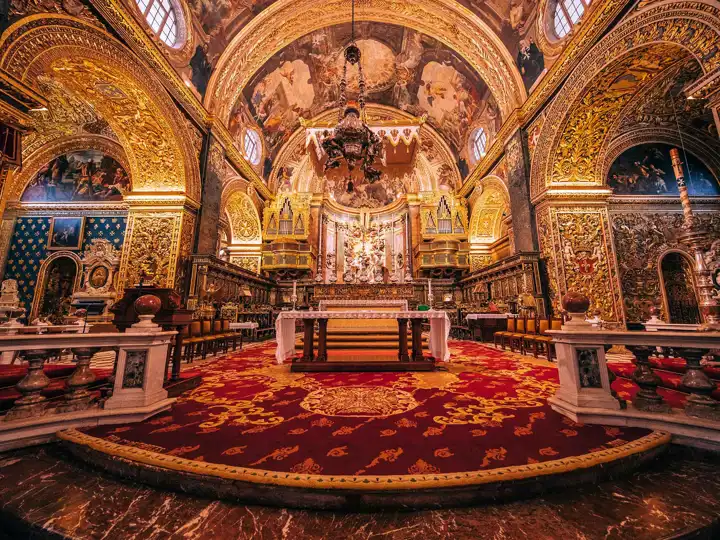
Malta's capital city of Valletta was built by the Knights of St. John in 1565. They upheld the island for 268 years and left behind a veritable treasure trove of palaces, churches, art, and a buzzing culture. Not only is Valletta a UNESCO World Heritage Site, but this Baroque gem of a city also boasts more than 320 monuments in a .2 square mile radius—the densest concentration of monuments in the world.
Then, of course, there is the incomparable St. John's Co-Cathedral, arguably the most important site in the city. From its sumptuous high Baroque interior, tombstone laid floors, and vaulted painted ceilings, to its two Caravaggio masterpieces hanging in the oratory, this landmark can't be missed.
Also Don't Miss: A stop at the Saluting Battery overlooking the Grand Harbour. Its origins are as old as the city itself. If you're lucky, you may even witness a firing demonstration up close.
Ker & Downey Exclusive: Access to a private palazzo for a cooking class and dinner.
Explore Ker & Downey's Valletta Travel Guide
2. Unrivaled Ancient History
One of Europe's first civilizations dating back to 5500 B.C., Malta has been fought over for thousands of years. The Temple Builders, Phoenicians, Carthaginians, Romans, Arabs, Normans, Knights of St. John, Napoleon, and—finally—the British all made their mark over the millennia. As such, no other country can claim quite as much culture and history in such a small land mass as the Maltese Islands.
Here you can step back 5,500 years with a visit to the Hagar Qim and Mnajdra Temple Sites, which are some 1,000 years older than Stonehenge and the Egyptian pyramids. The temples were excavated in 1839 and are thought to have been built to worship a fertility goddess.
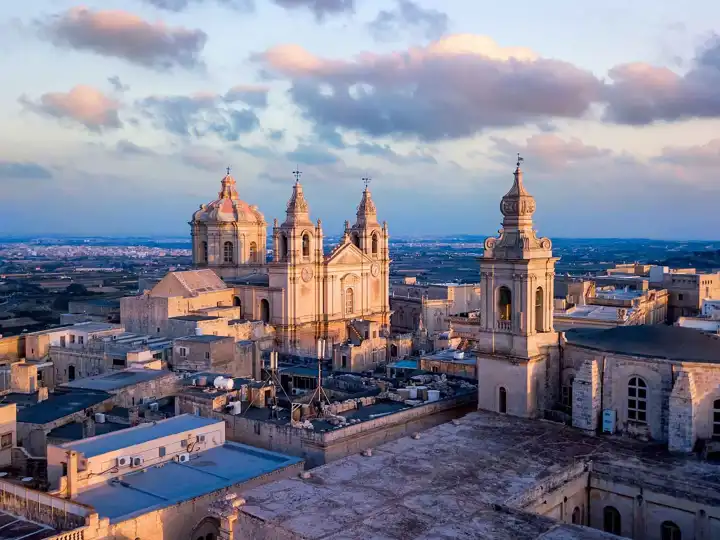
The Old Capital City of Mdina, too, offers a powerful testament to living history. The city—known as the Silent and Noble City—includes a range of Baroque, Norman, and Arabic architecture and is nicknamed as "Citta Nobile" for the many noble families that occupied Mdina well before the Knights of St. John arrived. It's no wonder why Game of Thrones utilized its passageways and gates for filming.
Also Don't Miss: A tour of the al Saflieni Hypogeum, an outstanding underground burial complex and UNESCO World Heritage Site that bears testimony to an ancient civilization that lived here between 4000 B.C. and 1500 B.C.
Ker & Downey Exclusive: A falconry experience with a Birds of Prey master, who can speak to the ancient falconry tradition dating back to the 13th century when European emperors used to send their best falconers to obtain the most valuable Maltese birds.
3. Unique Local Traditions
One of the most remarkable traditions in Malta is the art of gilding. Walk into just about any church on the islands, and you'll see statues, frames, and artifacts that glimmer and glint in the eye. It is the prized Maltese Clock, however, that differentiates gilders in Malta from those abroad. The Knights of St. John influenced the design and shape of the clocks, whereby the colors denote different vocations. This age-old craft remains in high demand with international buyers waiting up to a year to obtain a coveted Maltese Clock.
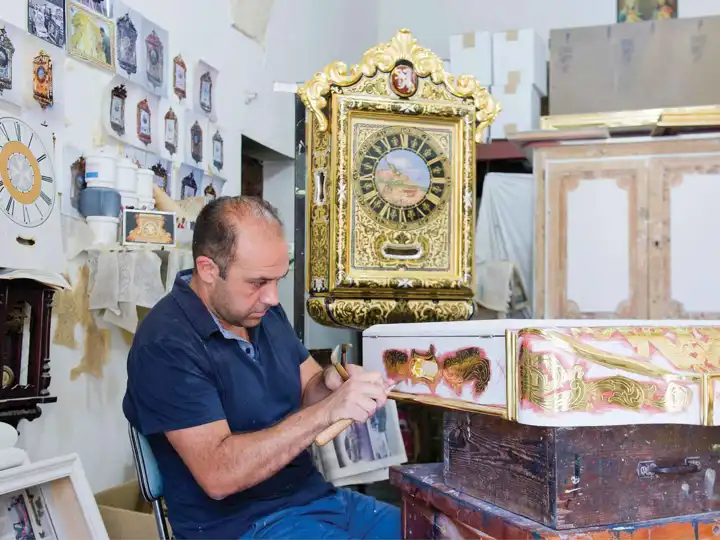
Another unique cultural treasure found inside Malta's many churches is one that often remains mostly hidden: the organ. Indeed, Maltese churches house some of the most important historic pipe organs in the world, many of which date back to the 18th century. They play an invaluable role in Malta's musical identity, and—fortunately—there are organ restorers who are willing to share their restoration techniques for these ancient and irreplaceable instruments.
Also Don't Miss: The Maltese bread and passtizi snacks found inside the village bakeries, which play an integral part in the local community and keep the island's culinary traditions alive.
Ker & Downey Exclusive: Meet a Gilder Artisan for a one-on-one opportunity to learn about his trade and how he creates the Maltese Clock.
4. Incomparable Natural Beauty
Malta boasts the same clear waters, a rugged coastline, and countryside charms as its Mediterranean neighbors. The only difference? Malta has consistently ranked as the top destination for scuba diving, for one. Also, one can walk just 20 minutes from the hustle and bustle to find total bucolic serenity. Such is the easy access of Malta.
One of the best vantage points can be found along the west coast at the Dingli Cliffs, the highest point on the Maltese Islands. The cliffs provide a majestic overlook toward the small, terraced fields below, the open Mediterranean Sea, and the uninhabited islet of Filfla, which was once used as target practice during World War II.
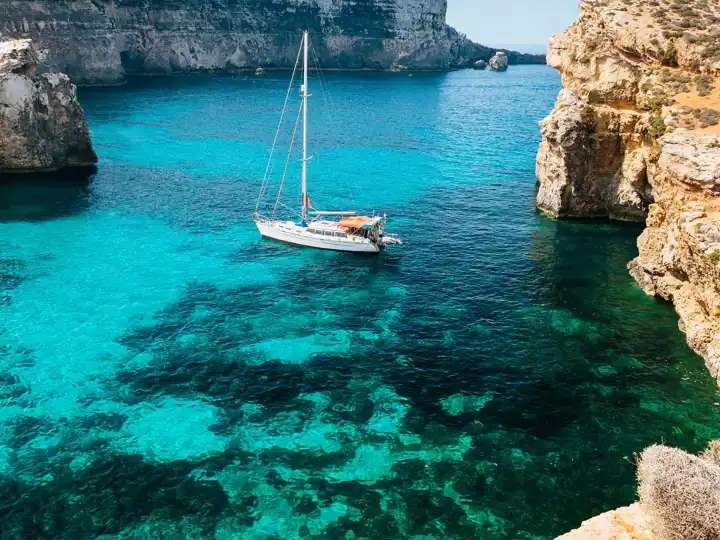
What is particularly appealing about the natural wonders of Malta, however, are the many riches that can be found in their exploration. Take the Xemxija Heritage Trail Hike, for example. The trail includes a Roman road, dry stone walls, a menhir, the Cave of the Galley, apiaries, a burial cave, a Neolithic temple, a troglodyte cave, unique prehistoric tombs, recently discovered Roman baths, a farmhouse, and Mistra Gate, to name a few.
Also Don't Miss: Ghajn Tuffieha bay—literally meaning "Apple's Eye"—which offers a glimpse into Northern Malta's beautiful scenery. On top of the cliffs west of Gajn Tuffiea there is an old defense tower built in 1637 by Grand Master Giovanni Paolo Lascaris of the Knights Hospitaller.
Ker & Downey Exclusive: A private boat ride through the Blue Grotto, a series of sea caverns that highlight the beautiful waters in the area.
5. Deep Faith
Faith runs deep in Malta. Nicknamed "The Sacred Island," one can find a strong Jewish cultural identity as well as prolific religious expression in its 364-plus parish churches and wayside chapels. St. Paul was shipwrecked on the Islands in 60 A.D. and introduced Christianity here.
One of the best ways to learn about Malta's Christian origins is on a walking tour of Rabat. St. Paul’s Church and Grotto as well as St. Paul’s Catacombs are housed here. The Christian, Jewish, and Pagan Catacombs of St. Paul are not themselves associated with Paul but derive their name from their proximity to St. Paul's Church and Grotto. They are a fascinating labyrinth of subterranean tombs from the 3rd century A.D. and the earliest archaeological evidence of Christianity in Malta.
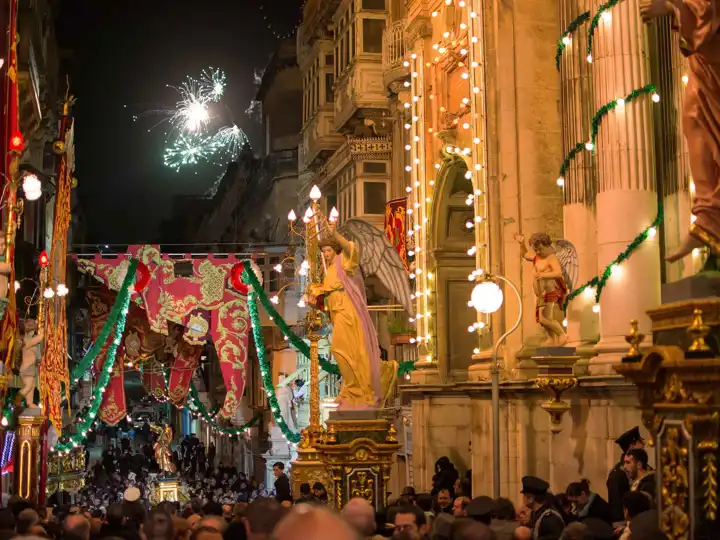
There are also multiple opportunities to learn about Malta's Jewish culture, which dates back to the 4th and 5th centuries during the Roman period. During World War II, Malta was the only European country to not require visas from Jews fleeing Germany. In fact, numerous Maltese Jews fought Germany in the British Army (in Malta) during the war. Pay homage to this unique identity by participating in prayer services at the Synagogue with members of the active local Jewish community, currently comprising about 200 individuals.
Also Don't Miss: Experiencing Malta during Easter time. The island's many feasts and celebrations make it one of the best countries to visit when most others experience closures.
Ker & Downey Exclusive: Access and entry into the three private Jewish Cemeteries.
6. Gozo, The Sister Island
Likened to Malta’s "Sicily," Gozo is much more rural and features beautifully quaint villages. Access to Gozo is easy with the fast ferry, which transports you there in just 45 minutes. Once there, venture to Victoria, the "capital" of Gozo. The Citadel, or Citadella, was first fortified during the Bronze Age and later developed by the Phoenicians. By Roman times, it had become a complex Acropolis and was the only fortified refuge against attack until the 18th century.
Outside the city, one can find several natural wonders in Gozo. The valley of Wied il-Miela is a rich botanical display of yellow Cape sorrel and a lovely place to walk, especially in the late autumn into spring. Wied l-Gasri, too, is a marvelous valley in Gozo and perfect for country walks, bike rides, and scuba diving. The secluded bay offers a lovely spot for swimming and also features an intriguing cave with a historic purpose: supplying sea water to fill neighboring saltpans. Indeed the production of sea salt has a long tradition in Gozo, and the Xwejni Salt Pans found near Marsalforn are still used today.
Also Don't Miss: Ramla ("Red") Bay. The reddish hue of the sand paired with rocky cliffs and curve of the bay make this a true stunner.
Ker & Downey Exclusive: And eJeep Adventure around the island. Power through rugged valleys and backroads and take in sleepy villages and dramatic country and coastal trails as you journey to the highlights of Gozo.
Pro Tip: Instead of taking the ferry between the main island of Malta and the smaller island of Gozo, book a private yacht for a full day experience visiting private swimming coves and the stunning Blue Lagoon on Malta’s mostly uninhabited Comino Island. - Nicole Porto

Quest Magazine
Dedicated to the experiential style of Ker & Downey travel, QUEST Magazine features eye-opening content that focuses on unforgettable experience, unheard-of destinations, and the very best our world has to offer. Each issue is packed with insider information, what's new in the world of travel, and editorial pieces that focus on our global culture, philanthropy, and transformative travel.
Read Issue 21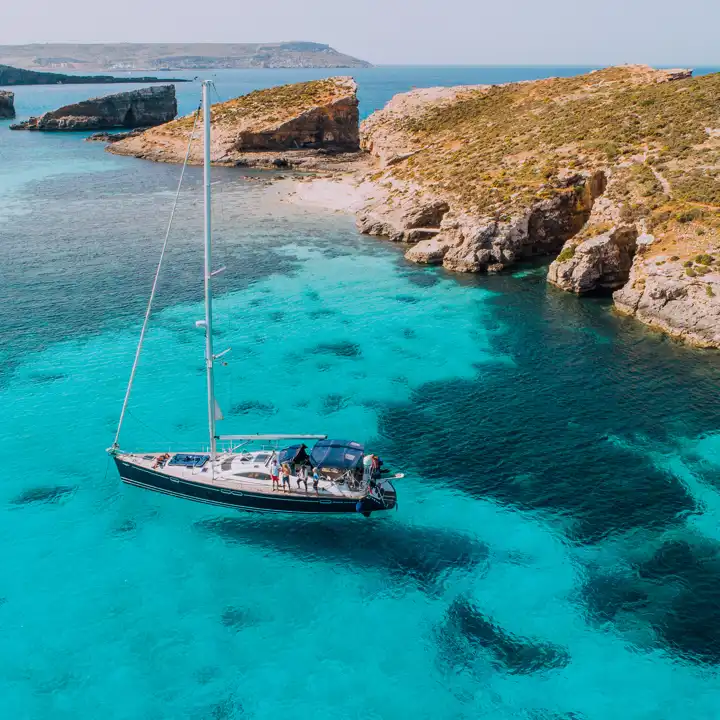
Malta
the Mediterranean archipelago of Malta is a trove of natural and cultural treasures. Discover why a Ker & Downey journey to Malta is different.
Discover Malta